Calling People In, Not Out
While we have acquired reams of facilitation strategies, the single most important learning for us is that behaviors people exhibit are the best way they know of to take care of themselves. |
Bob Garmston and Carolyn McKandersFrom the book: It’s Your Turn:Teachers as Facilitators. A Handbook |
This month, Jon Saphier, RBT Founder, interviews Robert Garmston and Carolyn McKanders about their work around the goal of increasing the quality of collaboration in schools to produce benefits for students. The interview contains invaluable concrete nuggets with scripts for handling strong feelings and difficult moments in meetings and workshops as well as many other points of wisdom that can be generalized beyond the meeting setting.
About Bob and Carolyn:
Robert Garmston is Emeritus Professor of Educational Administration at California State University, Sacramento. He is co-developer of Cognitive Coaching with Art Costa and co-developer of Adaptive Schools with Bruce Wellman.

Carolyn McKanders writes from her experience as an urban teacher, social worker, staff development specialist and international consultant. She is Co-Founder of The Center for Adaptive Schools supporting collaboration and group facilitation. She is Director Emeritus of Thinking Collaborative, the home of the Adaptive Schools and Cognitive Coaching Seminars. Carolyn also supports groups with honoring diversity, equity, and inclusion.
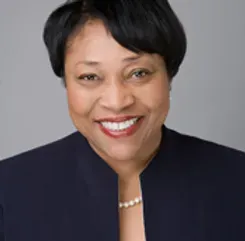
Bob and Carolyn have known each other for over 20 years. They first met when Bob came to Detroit to present Cognitive Coaching seminars. Bob initially acted as a mentor supporting Carolyn's journey as a consultant. Bob and Carolyn have co-presented internationally and have partnered in facilitating meetings for a decade. They are colleagues and friends who co-wrote the book It’s Your Turn:Teachers as Facilitators. A Handbook in 2021.
The authors bring decades of practice facilitating groups and teaching others to confidently facilitate their own meetings. Their personal and collective experiences working with a spectrum of meeting types – from routine processes to emotionally charged topics – inform the resources and approaches they present in this book.
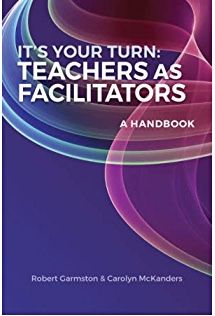
In Their Words
“We’ve chosen to write about meetings for two reasons. First, we’ve seen many meetings run by teachers and others whose job description does not include leading groups in planning, decision-making, or student assessment. These people face special challenges, and while they can often be effective, other times they need help. Secondly, teachers in many settings shared sources of intense frustration that ultimately deprive them of the influence they should have on shaping student learning. We describe practical responses to these.
Originally, we came to this work as teachers in public schools: Carolyn in Detroit and Bob in California. We had been members of groups both large and small, had seen joyful successes and disappointing failures, and wondered what made the difference. Then, like many others, we began to assume leadership roles fairly early in our careers: Carolyn as a leader in small-group settings and Bob as a chairperson on school committees. Curious about the dynamics of groups, we each sought to learn more about what makes them productive. Since those beginnings as teacher leaders we have lived the tensions and responses described in this book throughout North America and in dozens of international schools. While we have acquired reams of facilitation strategies, the single most important learning for us is that behaviors people exhibit are the best way they know of to take care of themselves.”
The Five Mindsets
Their book responds to the tensions identified by teacher facilitators and provides practical strategies and tools organized by Five Mindsets.
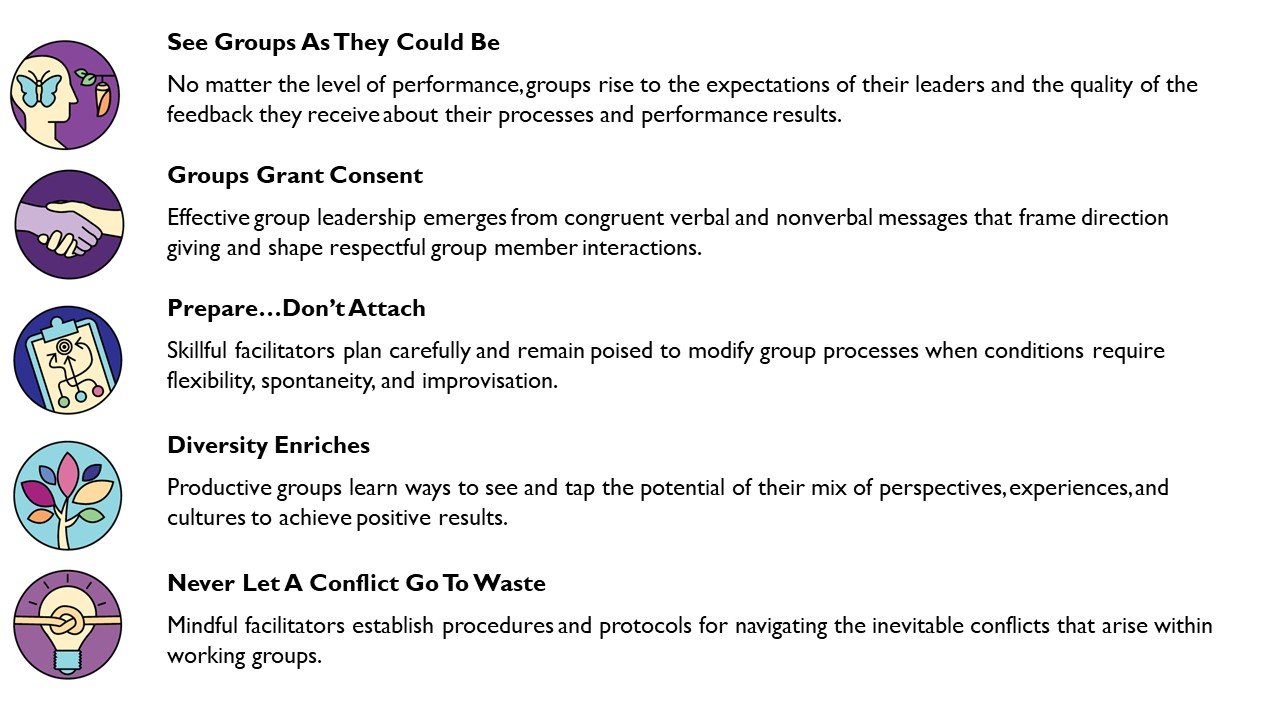

View the Interview
See the interview. View the full hour or select a smaller selection.
The Interview
Below is an outline of five different segments of the hour conversation between Jon, Bob, and Carolyn, so you can go directly to parts that interest you. Get ready for a treat of learning.
A facilitator must have a vision of the group as it could be. |
Part 1: Mindsets of a Teacher Facilitator
In the first part of the interview, Bob and Carolyn offer ways to deal with the inherent paradoxes of peers leading groups of peers:
- the desire to get work done vs fear of being seen as bossy
- building trust by being humble vs being clear and seemingly assertive to meet the need for certainty that participants have
Then they move to the benefits of a facilitator having “a vision of the group as it could be.”
Two more topics in this opening segment are:
- The new ten commandments of high functioning groups (really 7 Norms). They summarize the literature on this research.
- Second is dealing with toxic behavior. This part has an intriguing section on paraphrasing and presuming positive intent even when it appears the person doesn’t have that at all!
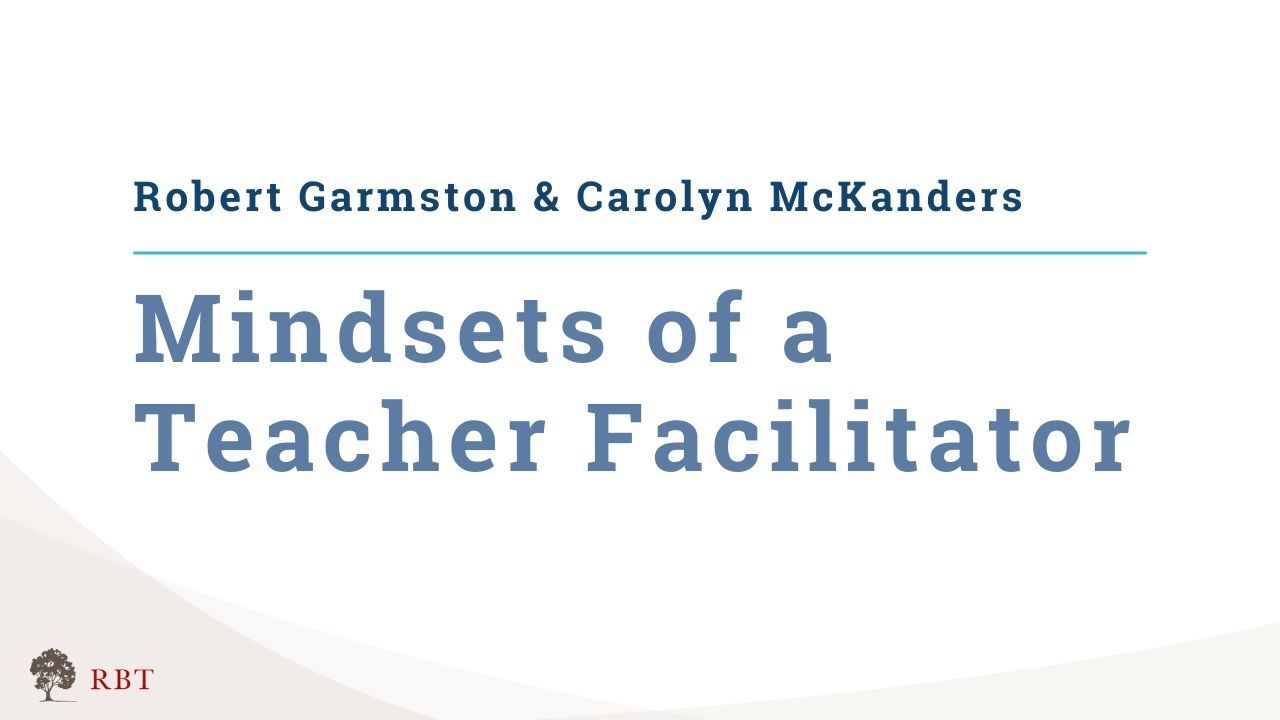
Look around your inner landscape. This is not to criticize yourself but to see what lives there. |
Part 2: Never Let a Conflict Go to Waste
This segment of the interview covers self-awareness of oneself as a facilitator. Starting with the presumption that people want to be effective and successful, Bob and Carolyn start their workshops with stillness to invite facilitators to “look around their inner landscape. This is not to criticize yourself but to see what lives there.”
Bob and Carolyn expand on how to understand the cultural conditions and the racial realities in the school where you are a facilitator. “Don’t touch the women wearing wigs.” “Be conscious that no situation is neutral.” “If you are uncertain, ASK.” “How would you like to be addressed?” “What are the banned words?” in a context. That helps with the need for us to make the meeting space psychologically safe. Create the space for people to express their concerns or feelings.
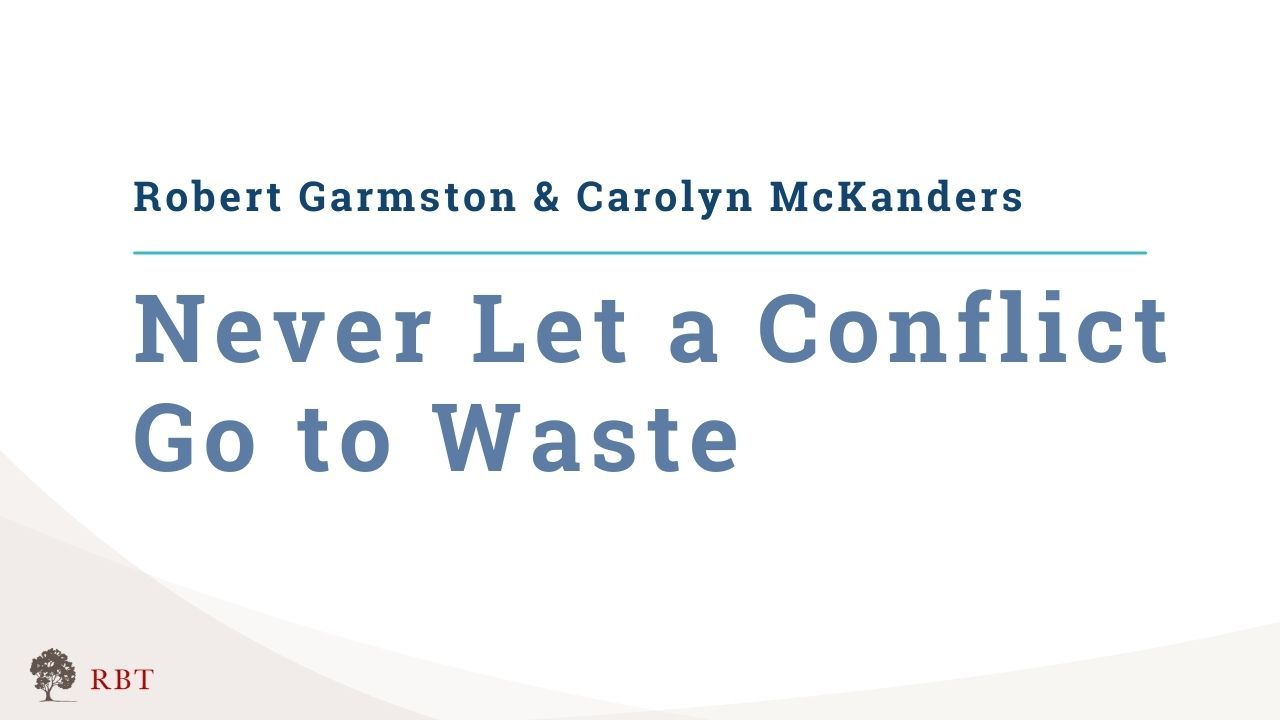
How do you handle a situation when emotions run high? Don’t call them out, call them in. |
Part 3: Defusing Feelings & Physical Space
When there are big feelings in a room, it is important to open up a path for feelings to be shared and acknowledged in a safe way.
- Allow individuals to connect as partners so that when sharing later, ideas can be shared more generally- “What I heard people saying a hidden agenda was…”
- Model listening to understand - paraphrase, acknowledge, and then move on (“get amnesia”) to the agenda of the meeting.
How do you handle a situation when emotions run high? How do you handle someone who calls out like that? Don’t call them out, call them in.
It is also important to create a new physical space - a fresh sheet of paper- for dealing with those emotions. Physical places in the room become associated with events and feelings that were aroused there. It is important to then leave those feelings there and “not drag them back to the presentation space.” Advice that can be used by educators (and all human beings) in any setting.
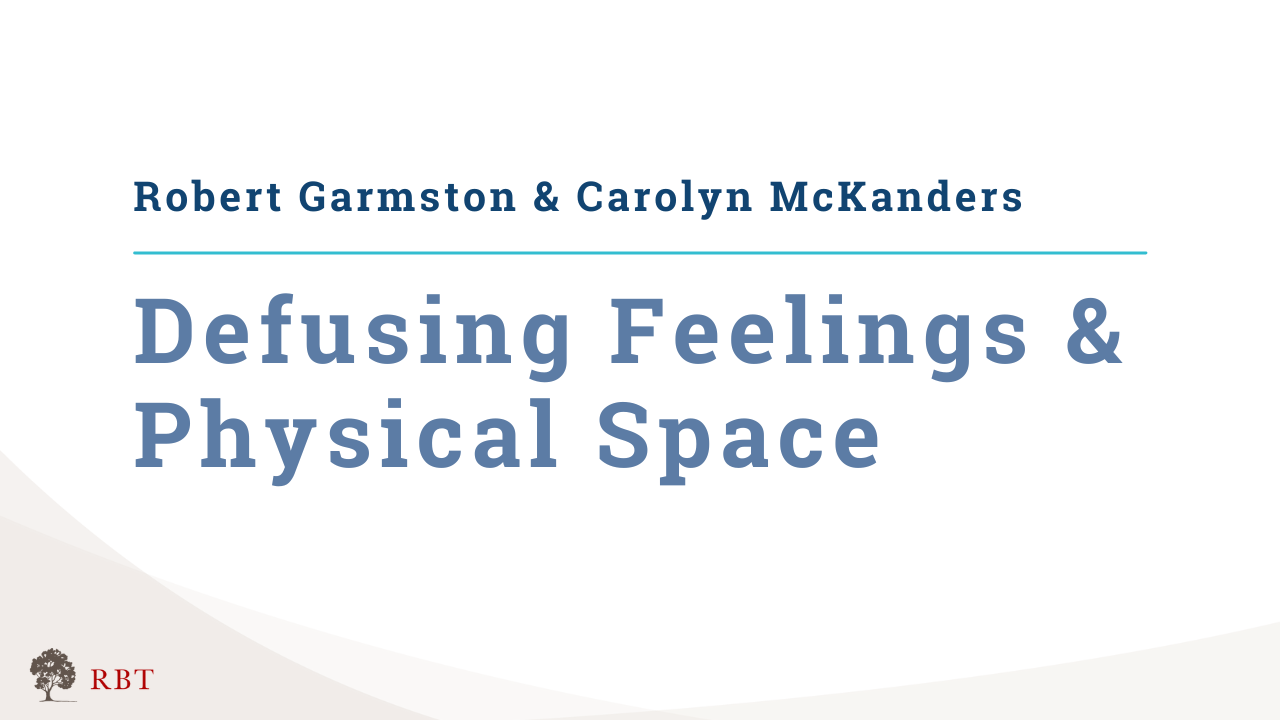
We teach how to advocate for an idea with sanity... to gain tools to be able to talk about issues, not people. |
Part 4: Improving A Whole School through a New View of Teacher Efficacy
This segment addresses how an effective group can make a big impact on improving a whole school. “When people gain confidence about their ability to communicate, they gain confidence and become willing to tackle hard problems. They gain tools to be able to talk about issues, not people.”
“We teach how to advocate for an idea with sanity. You can advocate and not argue. We teach how you place your ideas on the table and not crawl up there with them.”
The biggest advocacy could be a question you pose. The person that can inquire more deeply is the most flexible and influential. Questions can invite a group to think in a different way and stretch their consideration.
Teacher efficacy as framed by Bob and Carolyn is all about creating effective working relationships that these interaction skills help to build.

How to help people get unstuck: A counterintuitive piece is that you don’t have to tell people what’s wrong with their position. |
Part 5: Polarity Management
Facilitators are constantly doing a dance between polarization among people. How do I support people in expanding their perspective while honoring their own perspective?
How to help people get unstuck: A counterintuitive piece is that you don’t have to tell people what’s wrong with their position.
“Start with ‘Here’s what is important to you….and here is what you’re concerned about.’ and then paraphrase your butt off. Then…’I’m wondering what it might mean for our students if we were able to hold onto autonomy and at the same time pursue something collaborative?’ I’ve been doing that for 20 years and never gotten a ‘no.’”

Bob and Carolyn are a model of collaborative inquiry and credit many other people along the way who have influenced and impacted the work.
